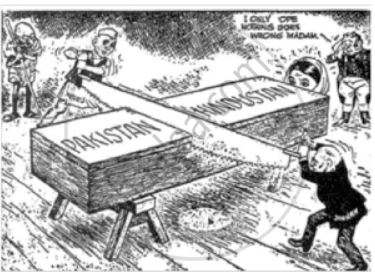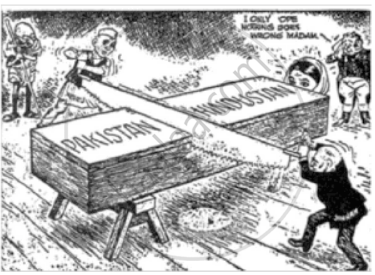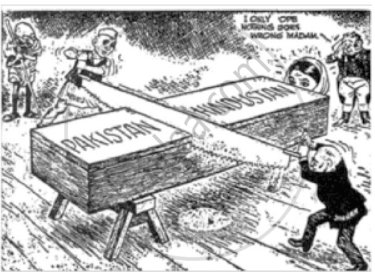Advertisements
Advertisements
प्रश्न
Highlight any three problems faced by Government of India immediately after independence related to the displaced population.
उत्तर
Following are the problems faced by the Government of India immediately after Independence related to the displaced population:
- Problem of displacement and rehabilitation: As a result of the split, around 80 lakh Pakistani refugees returned to India. The authorities encountered tremendous challenges in rehabilitating these refugees. As a result of the Partition, millions of people were uprooted and forced to flee their homes. The government was now in charge of their rehabilitation. Everything was in short supply, from food to medicine, shelter to distribution.
- Thousands of women were abducted and forced to abandon their homes: Thousands of women have been abducted. They were forced to marry and accept the faith of the abductor. To maintain "family honour," women were frequently murdered by members of their own families. Many children were separated from their parents. Those that were successful in crossing the border discovered they had no place to live. For thousands of these "refugees," freedom meant staying in "refugee camps" for months or even years. Such crimes were perpetrated at the time, but the authorities did little to stop them.
- Problem of ‘minorities’ on both sides of the border: The government was dealing with a significant issue. This was the issue with minorities on both sides of the border. Lakhs of Hindus and Sikhs in what was now Pakistan, as well as an equal number of Muslims on the Indian side of Punjab and Bengal (and, to a lesser degree, Delhi and nearby territories), were trapped.
APPEARS IN
संबंधित प्रश्न
Analyse any six consequences of the partition of India in 1947.
Which among the following statements about the partition is incorrect?
(a) Partition of India was the outcome of the “two-nation theory”.
(b) Punjab and Bengal were the two provinces divided on the basis of religion.
(c) East Pakistan and West Pakistan were not contiguous.
(d) The scheme of Partition included a plan for transfer of population across the border.
What were the consequences of the Partition of India in 1947?
The Cities that were divided into ‘communal zones’ during the partition violence were:
The ''communal zones'' exclude:
The main reason for India’s partition is:
Observe the diagram below and answer accordingly.

Who propounded the ‘two nation theory?
Observe the diagram below and answer accordingly.

On what basis was the two-nation theory proposed?
Observe the diagram below and answer accordingly.

Which two states were undecided to be part of either of these countries, at the time of partition?
Which among the following statements about the partition is incorrect?
British India was divided into British Indian provinces and princely states. Consider the following statements in this regard.
- British Indian provinces were directly governed by the British East India Company.
- Princely states enjoyed full control over their internal affairs but not on issues related to foreign relations.
Choose the incorrect statements
Who authorise British East India Company to trade in the East?
Name the leader of the freedom movement .of India who was popularly known as Frontier Gandhi?
How many princely states were in India at the time of its independence?
The concept of 'two-nation theory' was based on ______.
Which of the following were the problems faced at the time of Partition of India?
What does the term ‘religious majorities’ mean in context with the partition?
Muslim population in India in 1951 was ______.
Which statement about the consequence of partition is correct?
Writers and poets described partition of India as ______.
Who advanced the 'Two Nation Theory' that led to the partition of British India?
